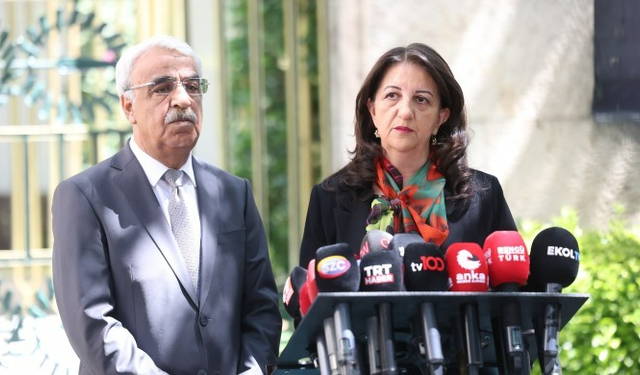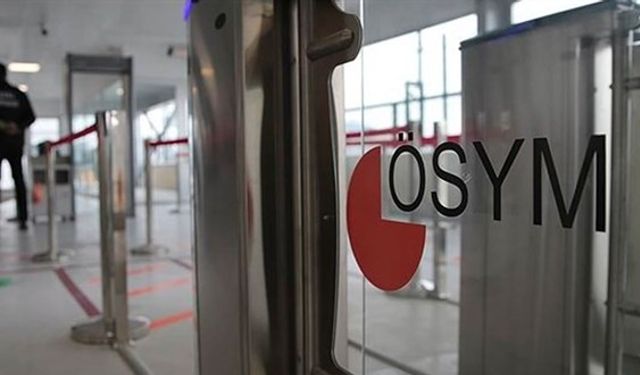Election security is once again the leading topic in discussions as voters in Turkey prepare for local elections in a few months. The Supreme Electoral Board (SEB) released the voter lists between January 4-17, which triggered allegations of exaggerated numbers of voters at specific locations and voters in certain regions being collectively moved to other regions. Republican People’s Party (CHP), Peoples’ Democratic Party (HDP) and Saadet Party have cried foul with striking evidence of hundreds of voters registered in a single house, leading to concerns in the public. It is indeed difficult to draw overall conclusions from individual examples. In this article, we took a deeper look in the latest voter lists across Turkey, and analyzed and visualized the data in comparison to the voters lists of previous elections on June 24, 2018 and March 30, 2014.
#dokuz8/ Ramazan Durak & Onur Metin According to the SEB data, 923,796 voters who were registered in the elections of June 24 will not be heading to the polls on March 31, 2019 due to various reasons including death, military service, conviction, restriction and expatriation. SEB data shows that 233,937 voters died since the elections of June 24. Besides, 375,107 voters whose addresses are no longer registered in the central civil registration system (MERNIS), and their names have been deleted from the voter lists. SEB also deleted voter registries on the basis of the following justifications: “205,630 voters due to military service; 43,278 voters due to conviction, 43,387 voters due to address being registered abroad; 1667 voters due to expatriation; 95 voters due to disappearance; 12 voters due to registration being closed after investigation of death; 495 voters due to invalid national ID numbers; and 10 voters due to becoming minors after correction of age.”
[infogram id="translate-secimler-2019-oy-kullanamayacaklar-1h7g6k5zz0n06oy" prefix="NMS"]
NUMBER OF VOTERS: 1.13% INCREASE IN 7 MONTHS, 8.35% IN 5 YEARS
So, how was the overall change in the number of voters? According to available voter data by districts, published on January 4, today there are 57,093,976 voters in Turkey, compared to 56,322,626 in 2018 elections. This means that the number of voters has increased by 1.37% in 7 months. The number of registered voters in 2014 local elections was 52,695,832, which reveals an increase by 8.35% in 5 years.
DIVERSIONS: AREAS WHERE THE INCREASE WAS ABOVE AVERAGE
In which provinces were the average increase rates higher? Sifting through the shifts in voter numbers may help us identify the provinces and districts to be focused for potential irregularities in voter registration. Although the registration of electors has not been finalized for the elections on March 31, the movements observed so far may still give us some ideas. We start by looking at some changes in numbers from June 24, 2018 to January 4, 2019:
INTERACTIVE MAP OF THE INCREASE IN VOTER NUMBERS
The first and second maps below demonstrate that the number of electors has decreased by 10982 (-0.10%) since 2018 elections, but show sudden increases in several provinces. [infogram id="translate-24-haziran-4-ocak-secmen-farki-1h7g6k5zz8j06oy" prefix="UCP"] The third map reveals a high mobility of voters across districts of Central Anatolia and Black Sea regions. Tallying with the statements of numerous politicians, this map also indicates that the number of voters has increased by 95.74% in Orta district in Çankırı and by 90.41% in Çamlıdere district of Ankara, turning the two provinces into dark green on the color scale of the map. The other districts with an above-average increase in voter numbers are Mesudiye in Ordu and İkizdere in Rize.
INCREASE IN VOTER NUMBERS: DOES IT NECESSARILY MEAN A PREPARATION FOR FRAUD?
So, do the sudden increases in the number of electors in these and other districts in the last 7 months necessarily represent evidence of vote-rigging? It is important to keep in mind a few facts: People may prefer to live in different cities or districts in different seasons. Besides, the mobility of university students and seasonal agricultural workers may have an impact on the number of population and voters – of course, if they apply for re-registration after moving to another province or district. Therefore, a comparison of the voter data published on the eve of the local elections with the data of the local elections in 2014 may help us better understand these movements:
[infogram id="translate-2019-ocak-secmen-orani-degisimi-1hzj4o5llxp32pw" prefix="Hfh"]
PROVINCES WITH THE HIGHEST INCREASE RATE OF VOTER NUMBERS AND PROBABLE CAUSES
Among the above maps showing the changes in the number and percentage of voters in 5 years, the first one demonstrates that Southeast Anatolia region and Tekirdağ, Yalova, Kocaeli, Muğla, Antalya, Çankırı and Gümüşhane provinces are the regions with the highest rate of increase in voter numbers. These provinces include a few cities which are known to have a significant tourist population or high number of young people under the age of 18. However, the increase in two provinces does not tally with the overall picture: Çankırı and Gümüşhane, where the impact of seasonal population movements is minor. In the second map we see the increase and decrease in voter numbers by provinces. The data of the districts is also presented in the map detail. It is not surprising that the increase is higher in metropolitan municipalities with large populations. Although the increase of voter numbers by 551,680 in İstanbul may seem significant, it can be considered natural, considering the vast number of the total population of the city. The third map is of critical importance to verify the grounds for voiced concerns related to “increase in voter numbers”, since these concerns were based on a comparison of the numbers in June 2018 elections and the numbers published in January 2019. Indeed, this map clearly reveals if there is a mass migration other than seasonal movements.
DATA TO CLARIFY THE PICTURE: CHANGES IN VOTER NUMBERS IN DISTRICTS SINCE MARCH 2014
The last map above consolidates the changes in voter numbers by districts in percentage and shows the provinces, where the district which the highest rate of change is located, in darker colors. In this map, Ankara has been shown with the darkest color since the number of electors has increased by 114.1% in Çamlıdere district in this province in the last 5 years. An interesting finding in this map is that Orta district in Çankırı has seen the highest increase in voter numbers between June 2018 and January 2019 with 95.74%, but the increase in the last 5 years is 13.79%. This rate is slightly above the average increase in overall voter number in Turkey in the last 5 years, which was 8.35%. However, there are other districts with far more striking increase. For example, Çamlıdere, where the CHP deputies have cried foul, has seen an increase in the voter numbers by 90.41% in the last 7 years, while the increase in the last 5 years is as high as 114.1%. In other words, it may be suggested that a new population of voters has arrived in this district since June 2018. It is also worth noting that this population of voters came from other districts in the same city. According to the statement of CHP, 5,667 people who moved to Çamlıdere in the last 7 months were previously registered in Ankara’s central district. The districts that have seen a significant increase in voter numbers in the last 5 years include Karaköprü in Şanlıurfa, Ovacık in Karabük, Mesudiye in Ordu, Köse in Gümüşhane and Çukurca in Hakkari. The other districts with a seemingly ‘odd’ increase in the number of electors are presented in the list below. The districts where an inquiry is required are marked in dark red, red and yellow:
[infogram id="translate-ilginc-ilceler-tablosu-1hxr4zlgg97o6yo" prefix="4xg"]
Orta district in Çankırı and Çamlıdere in Ankara, which have been brought to public attention by CHP deputies, are placed at the top of this table.
HIGHEST MOBILITY IN ORTA DISTRICT!
Now we focus on Orta district of Çankırı. Here, the number of electors was 10,230 in June 2011 elections, 14,414 in local elections of March 2014, 8,581 in November 2015 elections, 8,163 in the referendum of April 2017, 8,379 in June 2018, and finally 16,401 voters were registered according to the data published on January 4, 2019. The district has a high mobility of voters in general, and the number of electors went up by 13.79% since the previous local elections, which is slightly above 8.35%, which is the overall average increase in Turkey. However, the mobility of voters in this district deserves our attention.
ABRUPT HIKE IN LONGTIME STABLE VOTER NUMBERS IN ÇAMLIDERE
In Çamlıdere district of Ankara, there is a different story. The number of electors in this district was 5,730 in June 2011 elections, 5,835 in local elections of March 2014, 5,474 in November 2015 elections, 5,406 in the referendum of April 2017, 6,561 in June 2018, and it suddenly went as high as 12,493 according to the data of January 2019. In other words, the voter number in the district followed a horizontal line until last June, but it was increased by 20% in the one-year period following the referendum, and by 90.41% in the last 7 months. Deputies from CHP claim that their data show voters being “moved” from central districts of Ankara to Çamlıdere. However, it is unclear why there has been such a flow of voters towards this district. According to the results of the previous local elections, AKP is unrivalled in Çamlıdere, with the support of 68% of the voters. AKP’s share of the votes fell to 64.5% in June 2018 elections, but the ruling party still leads the polls with a lead of 43 points ahead of its closest rival, which is MHP.
UNUSUAL INCREASE IN THE POPULATION OF ULUKIŞLA IN THE LAST 7 MONTHS
Another district in focus has been Ulukışla in Niğde, which was brought to public attention by Ömer Fethi Gürer, CHP’s deputy representing the city. In this district, the growth of voter population was almost stable, moving from 15,916 in 2011 to 16,372 in 2018. However, according to the data of January 2019, the number abruptly went up to 19,314. In Karaköprü district of Şanlıurfa, the increase in the number of electors was 10.85% in the last 7 months, and the district was not listed above since it was below the limit of 20%. However, the Karaköprü stands out as the second district with the highest increase in voter numbers, which went up by 92.29% in the last 5 years. The other districts which has seen a drastic increase in voter populations in the last 5 years include Tekirdağ/Çerkezköy (46.76%), Aydın/Didim (40.42%), İzmir/Foça (39.77%), which are not listed above. In a nutshell, there are several districts where the increase in the number of electors is far more significant as compared to the local elections of 2014, in addition to the districts raised by the deputies. However, in most of these districts, the hegemony of AKP is unrivalled ‘for the time being’. In other words, we see this phenomenon in various districts where the latest elections saw narrow margins, as well as in other districts where ‘mobilizing’ voters will not bring any changes for any political party in the short term. However, the high percentage of increase in these districts should be enough to give an alert to the political parties and the district election boards.
CHP IDENTIFIES 500 IMAGINARY VOTERS ADALAR DISTRICT
CHP recently announced that they have found 500 non-existent voters in Adalar district in İstanbul on the voter lists published by the SEB. In his statement, Atilla Aytaç, the mayor of Adalar, said, “According to SEB, 11,862 voters were registered on November 27, 2018, but the number of voters on the lists published on January 4, 2019 is 12,761. This is an unprecedented incidence of fake voters in the history of our country.” Canan Kaftancıoğlu, provincial chairwoman of CHP, also took note of the increase in voter numbers in Adalar district, and said, “There are voters registered in derelict buildings, and even in completely destroyed homes. We started investigations as soon as the voter lists were published.” The number of electors in Adalar has increased by 7,58%.
[infogram id="translate-secim-fark-1h7g6k5zzko06oy" prefix="K64"]
OPPOSITION DEPUTY: “ALL OF THE NEW VOTERS IN ULUKIŞLA ARE 19 YEARS OLD”
Ömer Fethi Gürer, CHP’s deputy from Niğde, pointed out to an extraordinary increase in the number of voters in Ulukışla district of his city. Gürer claimed that “voters have been moved” for the local elections of March 31, and said “1700 new voters moved to Ulukışla since June 2018 elections. The mayor of the district is a member of AKP. When I brought this question to the parliament floor, the mayor said there was a huge interest towards Ulukışla. What kind of an attraction was it that drew 1,700 voters to Ulukışla since the elections last year?” Gürer said the sign at the entrance of the district which showed the local population was changed overnight and “the number was changed from 5,800 to 7,300”. Gürer said, “The increase in the voter numbers does not overlap with the actual population that moved here. The change in the voters’ profile is also striking. For some reason, all of the new voters who moved to Ulukışla are 19 years old. That is, there are no new voters under 19 years old who moved here recently.”
374 VOTERS REGISTERED AT 108-BED POLICE LODGING-HOUSE
HDP deputies Meral Danış Beştaş from Siirt and Mehmet Rüştü Tiryaki from Batman also raised claims of voters being moved in the southeastern cities and fake voters being registered in homes. Tiryaki said, “The police lodging house can accommodate no more than 108 people but there are 374 voters registered there.” Beştaş said 1,108 voters were registered in a single apartment in Hakkari. Beştaş also pointed out that the number of electors in Uludere district in Şırnak went up from 5,201 in 2018 to 7,163 in 2019, and said “In this small district, the population has grown by 40%. The AKP do not trust in the will of the people. They know that people will not vote for them.”
KINKS IN VOTER NUMBERS IN HAKKARİ
HDP published a report presenting some ‘interesting’ changes in voter numbers in Hakkari:
[infogram id="translate-hdp-secim-rapor-hakkari-1hdw2j5ggvlp4l0" prefix="8qf"]
HDP DEPUTY: “WE DO NOT INTEND TO CAUSE CONCERNS AMONG VOTERS, BUT…”
Mehmet Rüştü Tiryaki, who made a statement on behalf of HDP, said, “We do not intend to cause concerns among the voters. We make these statements to inform our voters. We are trying to raise awareness about election safety. We want to share with the public the areas where we see potential fraud. We want everyone to know these.” Tiryaki said the there were botched numbers of voters at some addresses, and gave the following examples of fraud from the elections of June 24: “In some cities, on-duty voters outnumbered the actual voters. For example, in Hozat district of Tunceli, 9 voters were registered at one poll, but 85 on-duty officers voted at that poll. At one poll in Beytüşşebap district of Şırnak, there were 10 registered voters, and 18 on-duty voters. In Çatak district of Van, there were 28 registered voters and 26 on-duty voters. In Güroymak district of Bitlis, there were 29 registered voters and 49 on-duty voters. At one poll in Beytüşşebap in Şırnak, there were 24 registered voters, but the total number of voters was 181, including 162 who were on-duty. There are many other examples. To ensure election safety, these officers have a right to vote on-duty, but if similar numbers appear in local elections, they may change the results. This is why we protest.”
HDP’S VOTER REPORT: 35,695 VOTERS REGISTERED AT 190 ADDRESSES
In a survey, HDP found 39,695 voters registered at 190 addresses, which means 188 voters per one apartment. [infogram id="translate-tablo-secimler-1hd12y7dd7ew2km" prefix="ziQ"]
700 SPECIALIST SERGEANTS REGISTERED AT A SINGLE APARTMENT
HDP spokesman Saruhan Oluç said there are reports of voters being moved in Şırnak, Siirt and Şanlıurfa, with a new population of voters that is just enough to cover the margin between HDP and AKP votes. Meral Danış Beştaş responded to AKP group deputy chairman, who dismissed the claims: “Following my statement about the situation in Siirt on the parliament floor, AKP group deputy chairman said ‘We discussed her statements with the Ministry of the Interior and, yes, there are 700 specialist sergeants registered at one apartment in Siirt.’ This is recorded in the minutes of the meeting. Allegedly, these people are members of the law enforcement. I am now asking the SEB: Can a guest house, or a police lodging-house, or a teachers’ lodge be considered as domicile address? This is a violation of the regulations of the SEB.”
Translation: Sebla Küçük Edited by: Gürkan Özturan











